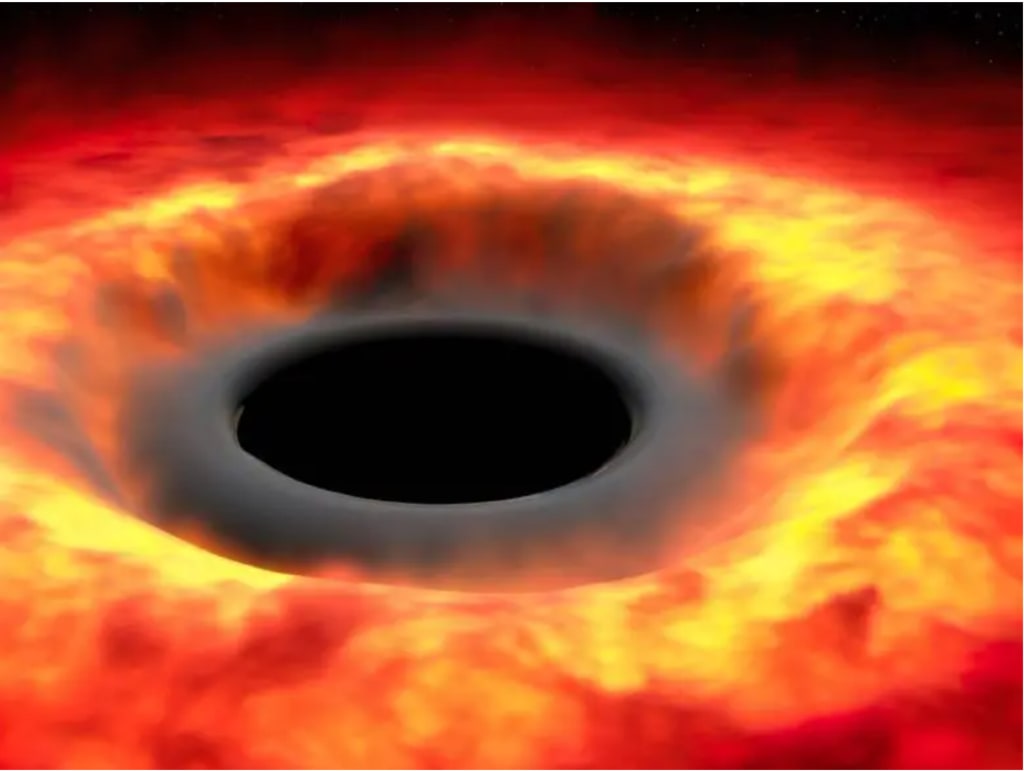The Black Hole Paradox: A Heat-Kernel Approach
Deciphering Black Hole Mysteries: A Quantum Dance in Gravitational Fields

Hello there, fellow lovers of the universe! Have you ever wondered about the peculiar mysteries that surround those space phenomena we call black holes? Well, buckle up! We're about to dive into a riveting journey through the cosmos where science and philosophy intertwine, embracing the exquisite poetry of the universe itself.
A Cosmic Conundrum
Let's begin with some basics. You may be familiar with the term 'black hole.' A black hole is a region of space where gravity is so powerful that nothing, not even light, can escape its gravitational pull. If we imagine a black hole as the ultimate celestial vacuum cleaner, there's an interesting point where the proverbial bag gets full. This point is called the event horizon – the point of no return.
However, Stephen Hawking introduced a fascinating paradox to this picture. He suggested that black holes are not quite the cosmic dumpsters we thought they were. Instead, he proposed that black holes might gradually emit something called 'Hawking radiation,' allowing them to slowly evaporate over time. And that's where our tale begins.
Dancing With the Heat-Kernel
Remember those exciting days in physics class when you learned about the Schwinger effect? Alright, maybe not everyone found it as thrilling as I did. But don't worry, we're here to make things as easy as pie (or a spherical apple pie, given our subject matter!).
The Schwinger effect is a quantum phenomenon where an intense electric field can induce the production of particle-antiparticle pairs. It's like pulling a rabbit out of a hat, only this time, the hat is a strong electric field, and the rabbit is a duo of quantum particles.
Now, what if I told you that researchers have found a similar approach to study black hole evaporation using the heat-kernel method, analogous to the Schwinger effect? It's quite the thought, isn't it?
The Cosmic Dance of Particle Production
Applying this heat-kernel approach to an uncharged, massless scalar field in a Schwarzschild spacetime – the mathematical description of the spacetime around a spherically symmetric mass – it's been shown that spacetime curvature plays a similar role to the electric field strength in the Schwinger effect.
In simpler terms, this curvature, born from the colossal gravity of the black hole, can coax out particle-antiparticle pairs, just like the electric field does in the Schwinger effect. This process is interpreted as local pair production in a gravitational field. It's a bit like an elaborate cosmic dance, where the gravitational tune of the black hole leads to the birth of new particle pairs.
The Black Hole Evaporation Plot Twist
And here's where the plot thickens. The researchers found that the particle emission peaks near the unstable photon orbit. This is an area not far from the event horizon where photons - particles of light - are momentarily trapped in a delicate dance around the black hole before they either fall in or escape into space.
When they compared the number of particles produced and their energy to the Hawking radiation case, the results were quite surprising. Both effects were found to be of similar magnitude!
However, this new pair production mechanism doesn't rely on the existence of a black hole event horizon. That's the plot twist! While we traditionally think of the event horizon as the ultimate point of no return, this research shows that the story might not be that straightforward.
A New Perspective
So, what does all of this mean? These findings add another layer of complexity to our understanding of black holes. Just as the philosopher Plato encouraged us to look beyond the shadows on the wall to discover a world of forms, this new approach invites us to look beyond the traditional concept of the black hole's event horizon.
It's a little reminder that the universe always has more mysteries up its sleeve, and we should never stop questioning, exploring, and pushing the boundaries of our knowledge. So, the next time you find yourself gazing at the stars, remember, there's a cosmic dance happening out there, one particle pair at a time.
Until our next journey, keep your eyes on the stars and your minds open to the limitless possibilities of our extraordinary universe. After all, we're all part of this grand cosmic ballet, aren't we?
About the Creator
Innovative Horizons: Breakthroughs in Medical Science
Subscribing to "Innovative Horizons" ensures that you have continuous access to the latest and most significant discoveries in medical science.






Comments
There are no comments for this story
Be the first to respond and start the conversation.